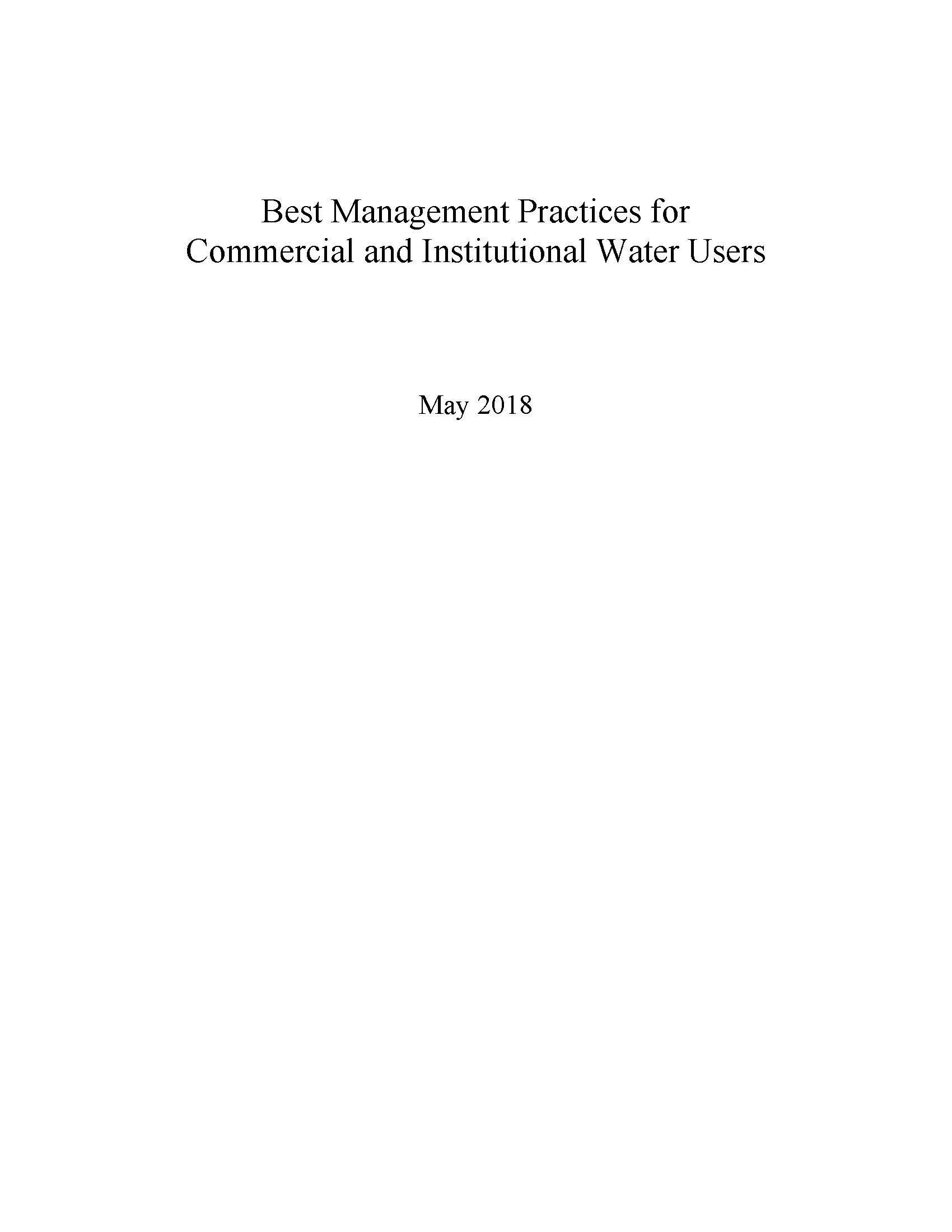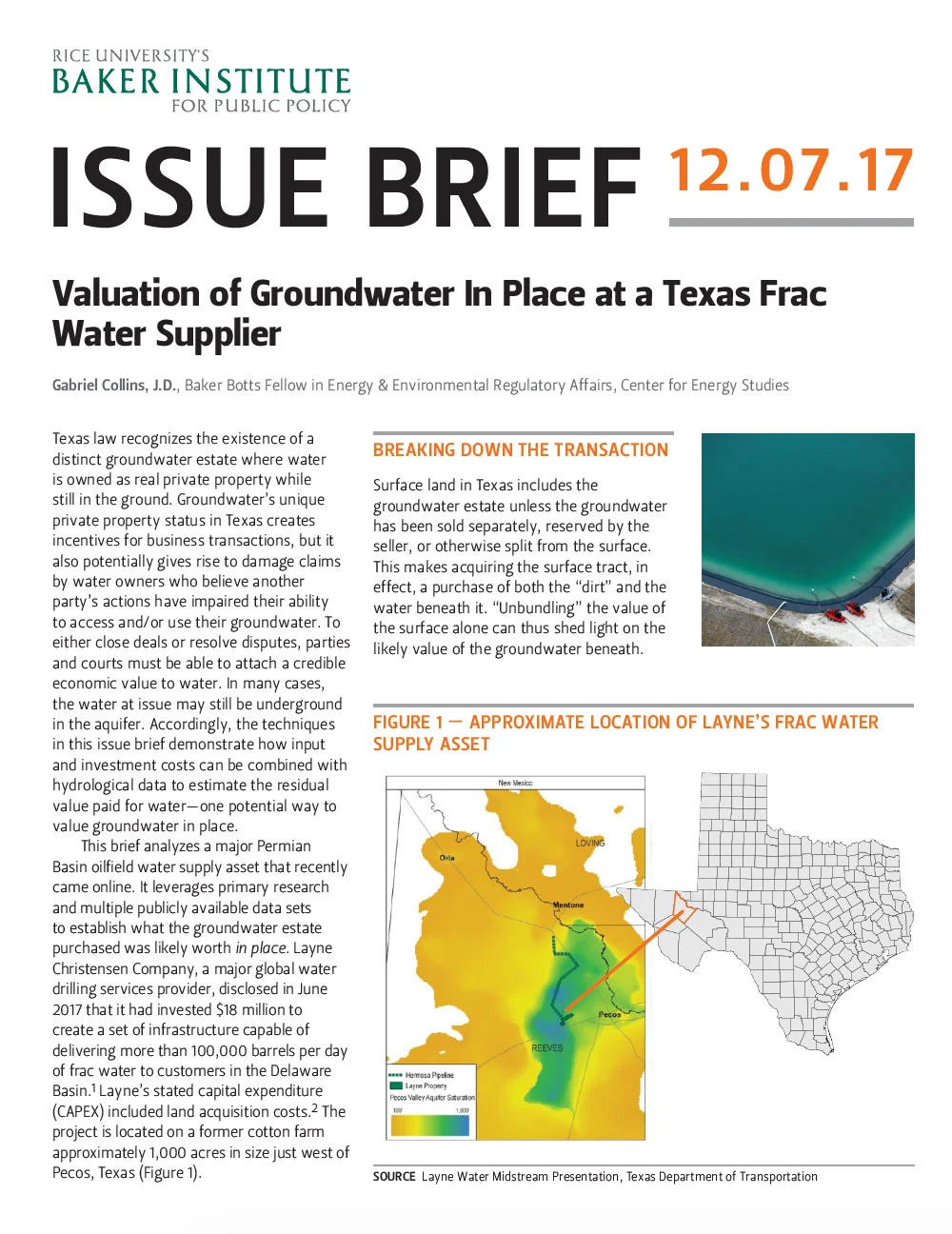This study examines the results of a random sample survey of Texans evaluating citizen awareness, attitudes, and willingness to adopt water conservation practices. The study investigates changes in public attitudes following the most intense one-year drought on record in Texas by evaluating public perception of water availability, assessing Texans’ attitudes and perceptions regarding drought conditions, and comparing the number of Texans adopting practices to conserve water before and after the drought of 2011. Almost 70% indicated that the likelihood of their area suffering from a prolonged drought was increasing. More than 61% of respondents have changed the way their yard is landscaped and 62% have also adopted new technologies in an effort to conserve water. Overall, responses indicated that Texans are concerned with water availability after experiencing, in 2011, the worst one-year drought on record, and that the majority of respondents are taking personal action in an effort to conserve water for the future
Read MoreThis one-pager provides information about rainwater harvesting, including measurement, incentives, government support, and other resources.
Read MoreThis brochure describes several ways to save water within a home.
Read MoreThis publication describes a proposed framework to assist communities in implementing the One Water approach in a way that optimizes water supplies to cities and keeps waters flowing for the creeks, rivers and bays that support healthy fish and wildlife and their habitats.
Read MoreThis brochure describes Texas's unique water issues and the various solutions being used to meet future water needs, including conservation, One Water, nature-based solutions, aquifer storage and recovery, reuse, groundwater withdrawal, desalination, interbasin transfers, and dams and reservoirs.
Read MoreThis guide lists common considerations for outdoor water use, including landscape design and irrigation, composting, rainwater harvesting, and common yard pests and lawn issues.
Read MoreIn Texas, surface water is owned and regulated by the State of Texas, whereas groundwater is owned by respective property owners under the rule of capture. Owners of surface water rights, issued by the state, and groundwater may use and sell their water as a private property right. The Texas Commission on Environmental Quality administers surface water rights, while groundwater conservation districts (where they exist) are primarily responsible for permitting groundwater use. This paper focuses on the complexity of both systems that are designed to manage water resources differently with specific emphasis on where surface water and groundwater interact. Surface water-groundwater interactions have contributed to disputes over the actual ownership and right to water. The available science and the limitations of the models currently used to make water availability and permitting determinations are discussed, as are the investments in field data gathering and interpretation and model enhancements that can lead to better assessments of surface water-groundwater interactions and impacts. More complete science and enhanced models may also help reduce the timeline associated with the permitting of future water supply and use strategies.
Read MoreThis bilingual one-page water bill insert reminds water users that saving water saves money and provides simple tips to improve their water use efficiency.
Read MoreAs Texas cities experience an increase in incidents associated with water quality contamination, the need for public education and engagement increases. The discussion in this paper identifies, based on publicly available data, three of the most common incidents in Texas related to drinking water and environmental contamination: boil water notices (BWNs), sanitary sewer overflows (SSOs), and lead in drinking water. Trends observed from 2011 to 2016 indicate a sharp upward increase in the incidents of such events. Increased frequency of incidents that threaten water quality often erodes public trust in the city and utility, thus making it more difficult in the long term to get public support for increased investment in water and wastewater infrastructure. The recommendations in this study focus on how to manage communications when events associated with water quality create a public relations challenge for city and utility leaders.
Read MoreThe Ogallala Aquifer has experienced a continuous decline in water levels due to decades of irrigation pumping with minimal recharge. Corn is one of the major irrigated crops in the semi-arid Northern High Plains (NHP) of Texas. Selection of less water-intensive crops may provide opportunities for groundwater conservation. Modeling the long-term hydrologic impacts of alternative crops can be a time-saving and cost-effective alternative to field-based experiments. A newly developed management allowed depletion (MAD) irrigation scheduling algorithm for Soil and Water Assessment Tool (SWAT) was used in this study. The impacts of irrigated farming, dryland farming, and continuous fallow on water conservation were evaluated. Results indicated that simulated irrigation, evapotranspiration, and crop yield were representative of the measured data. Approximately 19%, 21%, and 32% reductions in annual groundwater uses were associated with irrigated soybean, sunflower, and sorghum, respectively, as compared to irrigated corn. On average, annual soil water depletion was more than 52 mm for dryland farming scenarios. In contrast, only 18 mm of soil water was lost to evaporation annually, for the long-term continuous fallow simulation. The fallow scenario also showed 31 mm of percolation for aquifer recharge.
Read MoreThis project estimates the potential for residential and commercial, industrial, and institutional (CII) water conservation savings in Texas water planning regions C and K.
Read MoreThe purpose of this guide is to provide best management practices and technologies that can help reduce water and wastewater costs while conserving our state’s most precious resource.
Read MoreThis report describes the results of a statewide analysis of residential outdoor watering and estimates a range of water savings.
Read MoreThis report provides an assessment of agricultural and municipal water conservation issues; conservation efforts by the Texas Water Development Board, the Texas State Soil and Water Conservation Board, and municipalities receiving financial assistance; a discussion of future conservation needs; an analysis of programmatic approaches and funding for additional conservation efforts; an assessment of existing statutory authority changes and whether changes are needed to more effectively promote and fund conservation projects; and an assessment of the TWDB’s Agricultural Water Conservation Program.
Read MoreThis publication provides detailed information for readers installing rainwater harvesting systems.
Read More



















